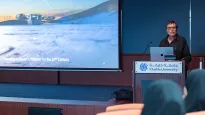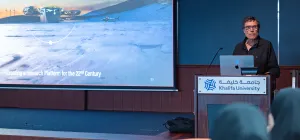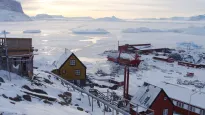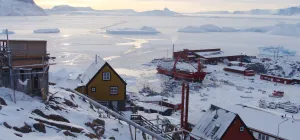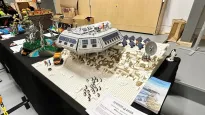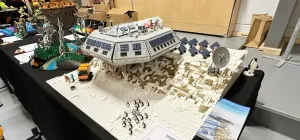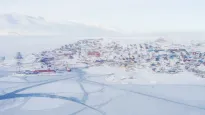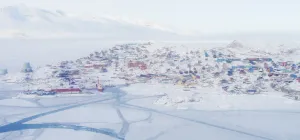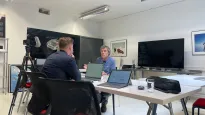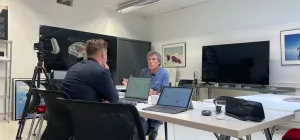PEA Welcomes Even More Scientists and a Film Crew
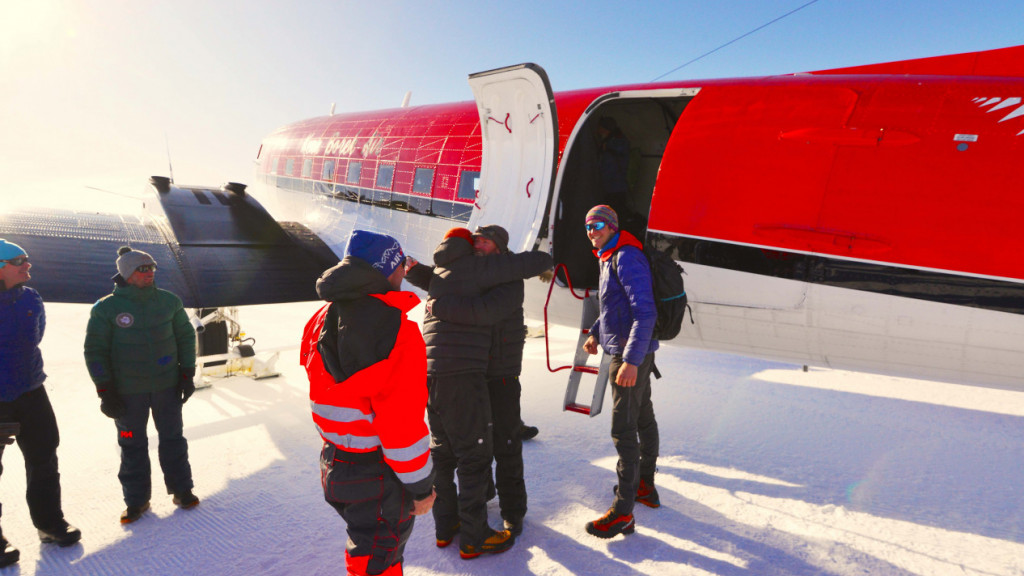
As the scientists who arrived last week completed their field training and started to head out into the field, additional scientists and a film crew led by Belgian journalist and filmmaker Eric Goens arrived on Friday.
Eric Goens and his film crew will be working with Belgian TV channel VRT to make an international film about the Princess Elisabeth station and research taking place in Antarctica.
This weekend all of the new arrivals will do their mandatory field training, highlighted by the crevasse training exercise that will take place on Sunday afternoon. This is done to ensure everyone who’s going to head out into the field next week is prepared and ready for action!
Ambitious fieldwork ahead
Now that Valentina Savaglia from University of Sevilla, ULiège and UGent, as well as Björn Tytgat from UGent have arrived to join Quinten Vanhellemont from the Royal Belgian Institute for Natural Sciences, the ExPoSoils project is ready to head out into the field to begin their site surveys and analysis, some locations are quite far from the station.
If the weather cooperates, the team hopes to visit seven or eight sites at least once, and a few additional sites multiple times to take samples and install time-lapse cameras to monitor snowfall over the course of the year,
The project will also visit the dry valleys where previous projects had installed snow fences. They plan to remove the snow from control plots which are behind the fences to sample the microbial communities. This is to compare microbial communities under the snow cover with those in exposed soils. Quinten has been running the HYPSTAR hyperspectrometer near PEA and will now install it at the dry valleysat to measure solar irradance and reflected soil radiance. These measements will contribute to validation and calibration of imaging satellites. On Saturday January 20th, the team visited two Antarctic Special Protection Areas (ASPA), Perlebandet and Pingvinane , nunataks relatively close to the station where sampled soil in order to carry out detailed analysis when they are back in the Belgium.
Projects at the coast
Meanwhile the active snow sampler the PASPARTOUT project has been tested these past few weeks at PEA and is working quite nicely. Now it’s time to bring it to the Princess Ragnhild Coast to let it sample snow there. Sibylle Boxho from the Université Libre de Bruxelles (ULB) will bring it to the L0 ice rise, close to the coast, guided by Manu Poudlet. They will spend about 10 days at the coast collecting snow samples and install the active snow sampler there to let it collect snow for the next year, from each season specifically, so they can examine what kind of aerosols make it to this part of Antarctica. This will help determine which atmospheric circulation patterns are persistent for driving air masses to this region as well as better understand atmospheric circulation patterns.
Simon Steffen and Nicolas Herinckx will join them for part of their journey form Wednesday on as they head to the coast to repair and service an automatic weather station called PE_L0 which is the most northerly installation of the Princess Elisabeth Antarctica Climate Experiment (PEACE) project transect – which spans roughly 250 km from the coast to the Antarctic plateau
Also heading to the coast are UC Irvine glaciologist Eric Rignot who will be guided by experienced polar field guide, Christophe Berclaz. Eric plans to run radar measurements along the grounding line of the King Baudouin Ice shelf over the course of a week, driving a grid across the grounding line over several hundred kilometers. They also plan to install an automatic weather station that had previously been installed at Vesthaugen Nunatak at the Baudouin Ice Shelf to monitor precipitation, wind speed, solar radiation and other parameters that can contribute to a better understanding of ice mass balance of the ice shelf – which is an integral part of the formula to better quantify Antarctica’s contribution to global sea level rise – and to this point in time
Alain Hubert will also lead the last traverse to the coast starting next week to pick up two containers that were left behind as JET A1 fuel that will be used for the international RINGS project campaign 2024-2025. The film crew lead by Eric Goens will be joining on the traverse and stopping off to film various science projects that will be peppered in the filed, culminating with a visit to Dr. Eric Rignot’s radar survey site on the King Bourdain Ice shelf
Meanwhile back at the station
Brandon Von Schalk from the EPFL in Switzerland installed a Vaisala Wind Cube, which is a LiDAR (Light Detection and Ranging) instrument by the south science shelter of the station this past week and it’s already operational! The instrument sends out a safe, omnidirectional laser, in four directions. The laser looks to bounce off something, anything in the atmosphere and then returns to the instrument. The colour of the laser changes very slightly - too slightly for the human eye to detect, but enough for the computer in the LiDIAR to detect and compute the wind speed at the specific elevation. His initial results show that there are very few particles in the atmosphere close to PEA.
On Saturday morning at 12:30am two Chinese scientists from the RINGS project arrived aboard the Snow Eagle DC-3 Aircraft. This aircraft is equipped with state of the art sensors and is flying apart of the 62,000 km long Antarctic ice shelf, specifically along the grounding line. They will be using PEA as their home base for the next 4-5 days and will depart with the Snow Eagle on daily missions to the grounding line, for certain instruments on board, good weather is required so we keep our fingers crossed for them.
And finally we are proud to announce that the Princess Elisabeth Antarctica’s brand new water treatment system was inaugurated and went online this past Sunday! Our engineers Aymar and Nico, our plumbers Bernard and Simeon, and our programmer Wouter (who helped at a distance) deserve recognition for finishing this project, for it was all custom-made and two years in the making! Now the station can welcome and treat the wastewater for up to 50 people! As the station has become quite popular among the scientific community, it will surely be needed in the coming years!
Download












